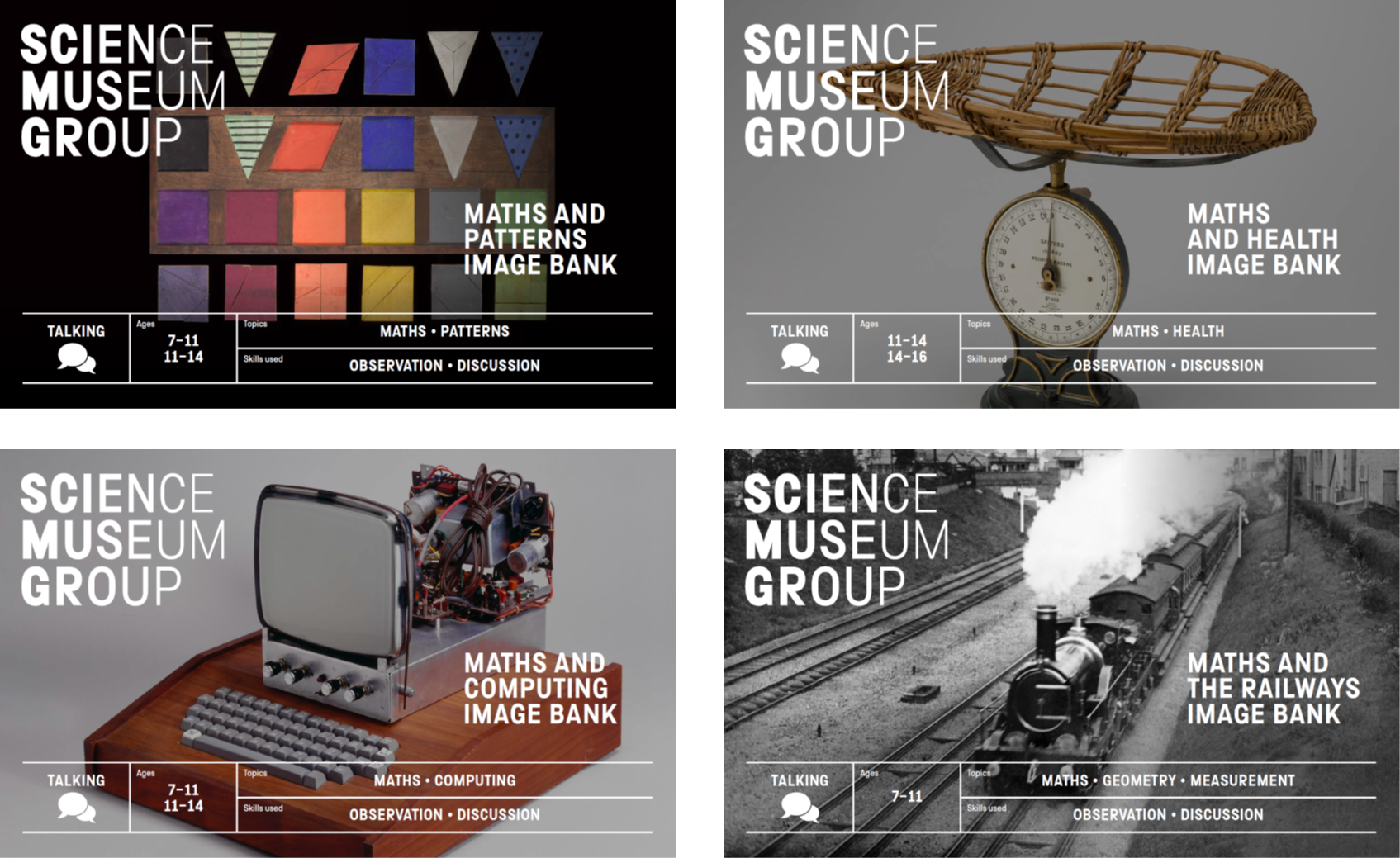In my previous post, Maths in our Museums, I discussed how our museum objects can be explored through a maths lens, pulling out examples of how maths can be found in medicine, technology and innovation, and industry. Since then, we have created a set of Image Banks to help share these stories.
What are Image Banks?
Image Banks share images and stories about objects from our amazing museum collection that can be used in the classroom before and after a museum visit and to reach out to those who cannot visit us. We have developed four maths image banks:
- Maths and Computing looks at calculating devices throughout history, from the abacus thousands of years ago to the rapid development of computing technology in the past 80 years.
- Maths and Health discusses the change of humanity’s understanding of health and disease because of measurement and statistics.
- Maths and Patterns shares stunning images of patterns seen across disciplines and the maths and science surrounding them.
- Maths and the Railways looks at the route of the railway track, the weight of the load of the train, the timetabling of the trains, showcasing that all aspects of rail development require the application of maths.

Supporting maths engagement
As with all of our Science Museum Group learning resources, our new maths activities were developed with our engagement reflection points in mind, to help make maths feel more accessible to as many people as possible.
Promoting talk
The main aim of our image banks is to promote maths talk, and each image includes a ‘think and talk about’ question to encourage discussion. While the topics are maths-focused using subjects of measurement, geometry, statistics and so on, the questions encourage students to share their own stories. For example:
- ‘What measurements are taken when you go to the doctor?’(from Maths and Health)
- ‘What kinds of patterns would you like to weave into your own clothes and blankets?’ (from Maths and Patterns).
Confidence and ownership
There are two important audiences for these image banks, teachers and their students.
To help teacher’s confidence and ownership to use our image banks in the classroom, each image bank comes with:
- An overarching introduction that links the topic at hand to maths
- A section on how to use images in the classroom
- General think and talk about questions around the topic
- An ‘Explore more’ section with links to other related stories and activities
For students, all the questions are open-ended, and do not have any right or wrong answers, to invite them to share their own view and opinions.
Everyday examples
The topics for this first set of maths image banks were chosen for their strong everyday links.
- Maths and computing looks at the origins and innovations behind the computer as well as pulling on other links like the World Wide Web, and video games.
- Everyone has probably been to the doctor, and Maths and Health links to familiar objects such as scales and stethoscopes as well as discussing disease and statistics, bringing maths into things that people already know about and discuss.
- Patterns surround us every day, and Maths and Patters highlights where we find patterns in familiar objects like human faces.
- Maths and the railway shares many examples from everyday life to discuss how the railways have changed our daily life. For example, ‘Fish and chips became a national dish because of the railways.’
We hope these image banks will support and possibly surprise even the maths anxious students and teachers and inspire them to discuss and further explore maths in our collections and beyond.
Our ‘maths engagement’ series shares insights from the research, development, and delivery stages of our new maths engagement offer.
Previous posts shared how our engagement reflection points help people connect with maths and our new suite of maths hands-on making activities.